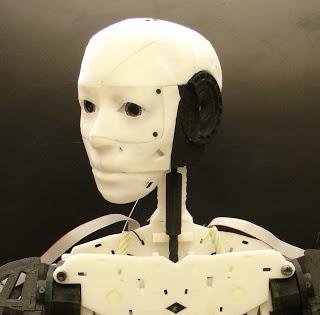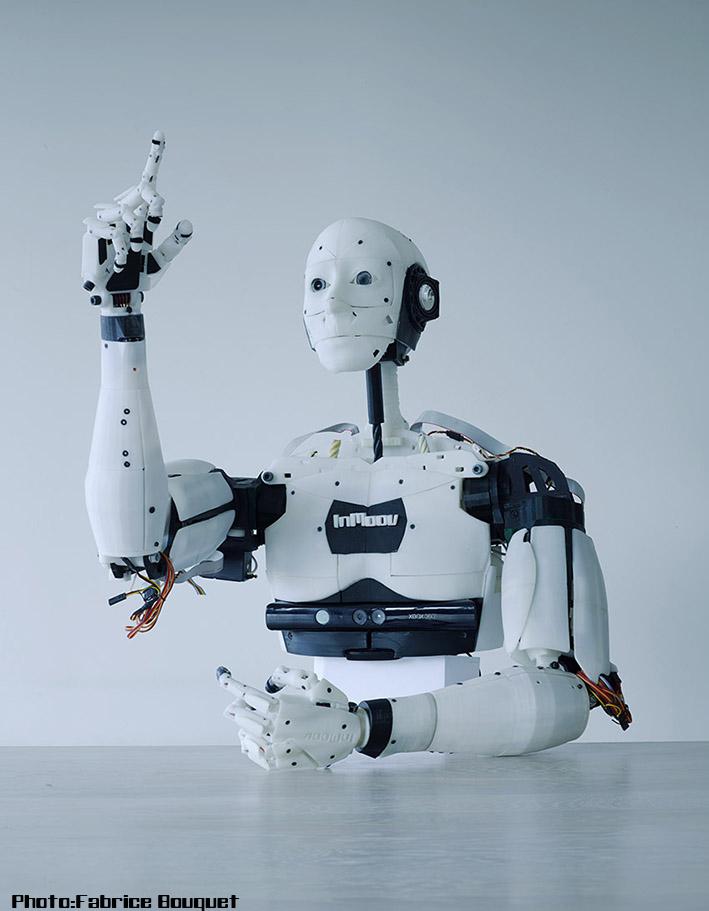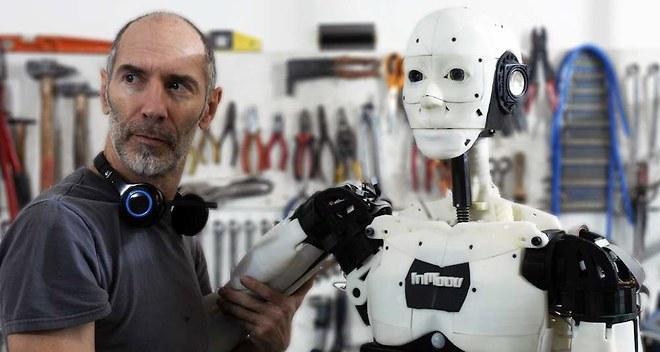 You would think that, given the prevalence of robots with humanoid form in popular culture–particularly in literature and film–we humans prefer that our robots resemble us. That’s probably not the case, however, suggests Dr. John Murray of the University of Lincoln in Lincolnshire, UK. Dr. Murray, who specializes in robotics, has found through ongoing research that people may not actually be particularly comfortable with robots that are overtly lifelike. He is spearheading an ongoing robotics project that uses three 3D printed robots to figure out why, in real life, we actually seem to have an aversion to anthropomorphic robots.
You would think that, given the prevalence of robots with humanoid form in popular culture–particularly in literature and film–we humans prefer that our robots resemble us. That’s probably not the case, however, suggests Dr. John Murray of the University of Lincoln in Lincolnshire, UK. Dr. Murray, who specializes in robotics, has found through ongoing research that people may not actually be particularly comfortable with robots that are overtly lifelike. He is spearheading an ongoing robotics project that uses three 3D printed robots to figure out why, in real life, we actually seem to have an aversion to anthropomorphic robots.
“I want to know what people want in a robot,” explains Dr. Murray, who is a researcher and teacher in the School of Computer Science at the University of Lincoln in eastern England. In addition to robotics and human-robot interaction he also specializes in aerial surveillance and unmanned aerial devices (UAVs), and 3D printing.
With his three robots, Marc, Erwin, and Tammie as mechanical guinea pigs if you will, Dr. Murray is exploring how people engage with robots. He wants to know why, despite our apparent fascination with humanoid robots, the more like a human a robot is, the more disturbing people find it. Dr. Murray asks volunteers to engage with Marc, Erwin, and Tammie by conversing with them, playing games, and interacting in other ways. “When you think of robots on TV and in films,” said Murray, “they tend to operate flawlessly–like the Terminator. He achieves his mission every time.”
The University of Lincoln’s robots were produced using an open-source design from InMoov, a project of French model maker and sculptor, Gael Langevin. InMoov, explains Langevin, is “the first life size humanoid robot you can 3D print and animate.” His robot can be produced using any 3D printer with a build volume of at least 12 x 12 x 12cm. He conceived of InMoov as a development platform for makers and hobbyists but also for use by universities and labs. Langevin designed InMoov using the open source software, Blender, and the robot is powered by more open source  software, MyRobotLab.
software, MyRobotLab.
Dr. Murray’s InMoov robots have cameras in their eyes as well as microphones in their bodies. Additionally, they have contact sensors that detect their distance from people and, we assume, other objects. All three robots were individually programmed so they function differently from one another and thus in their interactions with people. Specifically, said Dr. Murray, “…We wanted to create a robot that’s forgetful and more human-like to see how people relate to it.” The idea is that humans might be more amenable to androids–anthropomorphic robots–if the machines not only had human capabilities, but also human imperfections. For instance, volunteers who interacted with the robots would introduce themselves and then, on subsequent visits, the robot would have forgotten an individual volunteer’s name.
Dr. Murray hopes to eventually deploy the robots in, for instance, hospitals and museums in Lincolnshire, where they could be useful in supplementing if not substituting for human labor. Sophisticated robots are being used in medicine, but none are humanoid–they don’t need to be. In the case of performing services for humans like aiding busy hospital staff or guiding visitors through museums, it seems like a robot with human-like idiosyncrasies might make people more comfortable in such interactions. In this early stage, Marc, Erwin, and Tammie, the InMoov robots of Lincolnshire, are sort of ambassadors for a possible android horde. We hope Dr. Murray is teaching them manners.
What are your thoughts about having 3D printed humanoid robots in places like Museums and hospitals? Let us know your thoughts in the 3D Printed Imoov Robot forum thread on 3dpb.com.
Subscribe to Our Email Newsletter
Stay up-to-date on all the latest news from the 3D printing industry and receive information and offers from third party vendors.
You May Also Like
3D Printing Unpeeled: New Arkema Material for HP, Saddle and Macro MEMS
A new Arkema material for MJF is said to reduce costs per part by up to 25% and have an 85% reusability ratio. HP 3D HR PA 12 S has been...
3D Printing News Briefs, January 20, 2024: FDM, LPBF, Underwater 3D Printer, Racing, & More
We’re starting off with a process certification in today’s 3D Printing News Briefs, and then moving on to research about solute trapping, laser powder bed fusion, and then moving on...
3D Printing Webinar and Event Roundup: December 3, 2023
We’ve got plenty of events and webinars coming up for you this week! Quickparts is having a Manufacturing Roadshow, America Makes is holding a Member Town Hall, Stratafest makes two...
Formnext 2023 Day Three: Slam Dunk
I’m high—high on trade show. I’ve met numerous new faces and reconnected with old friends, creating an absolutely wonderful atmosphere. The excitement is palpable over several emerging developments. The high...
































